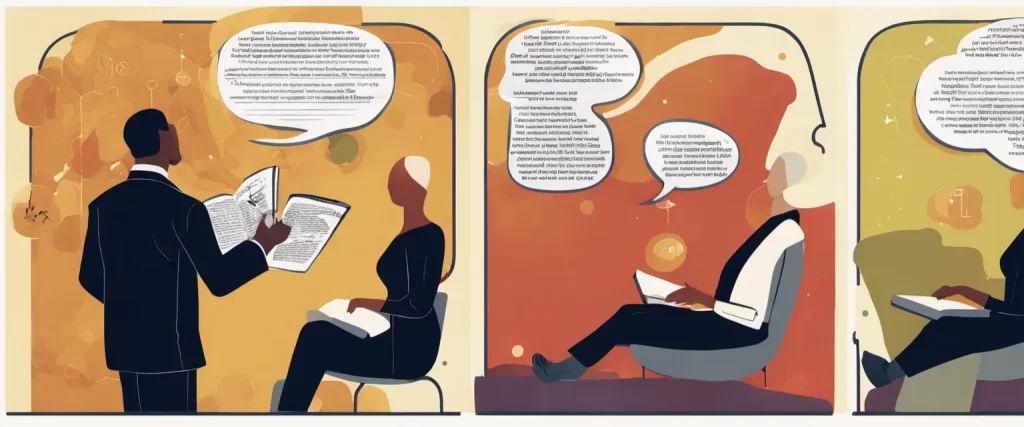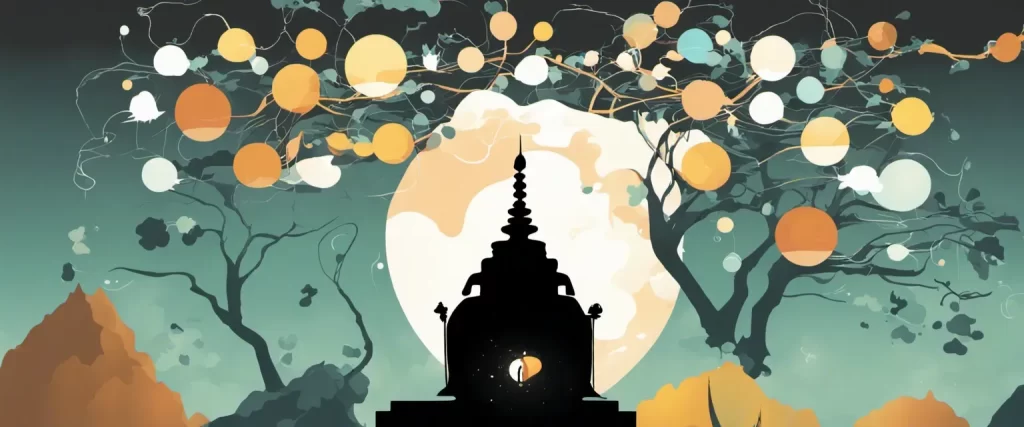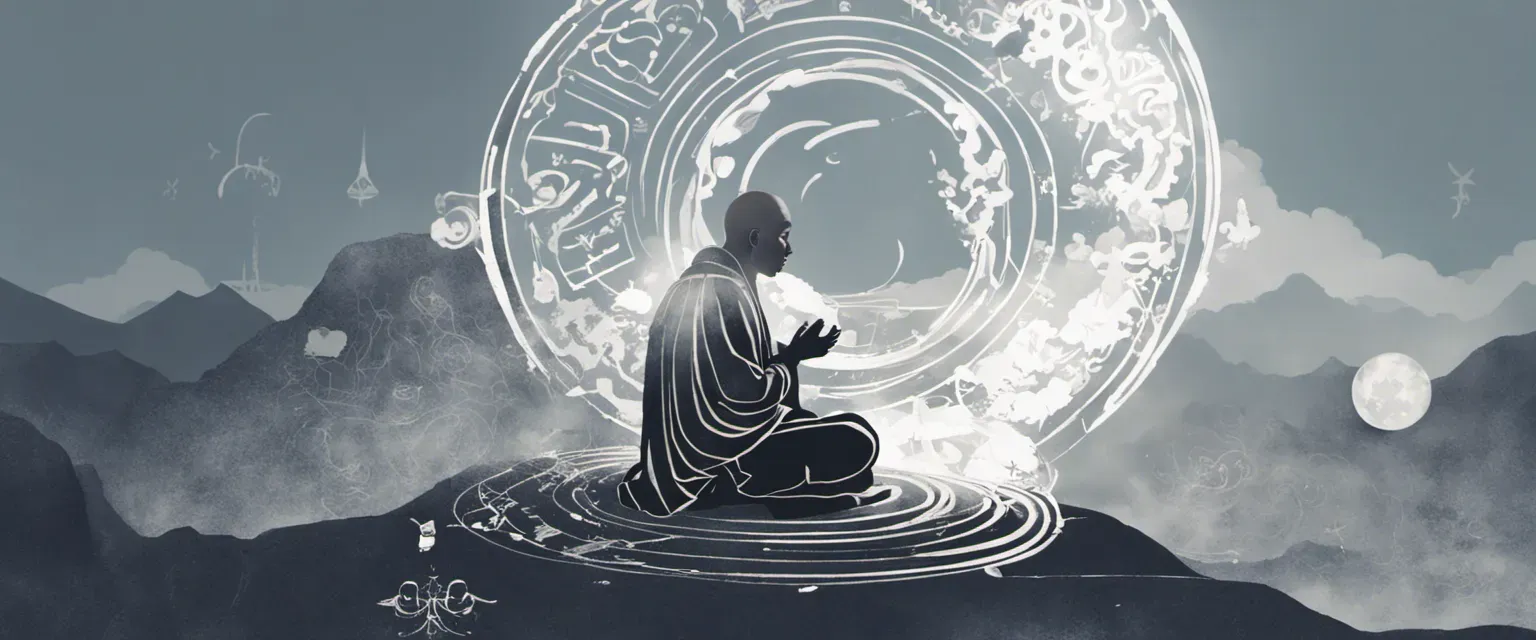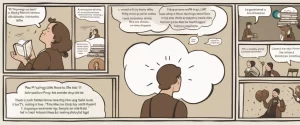——Think Like a Monk by Jay Shetty & Your Erroneous Zones by Wayne Dyer
In the vast landscape of self-help literature, certain books rise above the rest, carrying the wisdom and insight that propel individuals towards personal growth and fulfillment. Among these literary gems, two exceptional works stand out: “Think Like a Monk” by Jay Shetty and “Your Erroneous Zones” by Wayne Dyer. Both authors delve into the depths of human consciousness, shedding light on our inner struggles, and offering practical tools for overcoming obstacles on the path to self-discovery. In this comparative study, we shall explore the profound teachings that define these two thought-provoking books, examining not only their similarities in approach but also the unique perspectives they offer in guiding readers towards a life of purpose and authenticity. As we navigate through the pages of “Think Like a Monk” and “Your Erroneous Zones,” we can expect to uncover invaluable insights on mindfulness, self-limiting beliefs, and the art of creating lasting change. Through the exploration of these texts, we aim to gain a deeper understanding of how these influential works shape our understanding of ourselves and the world around us, enabling us to embark on a transformative journey towards a more conscious and fulfilled existence.
Brief Summary of Two Books
Think Like a Monk by Jay Shetty
Think Like a Monk” by Jay Shetty is a self-help book that explores ancient wisdom and practices from the monk lifestyle, offering guidance on how to bring more peace, purpose, and fulfillment into our lives. Shetty, who spent time living as a monk, shares his own personal journey and the valuable lessons he learned along the way.
The book is divided into three parts: Let Go, Train Your Mind, and Live Your Purpose. In the first part, Shetty focuses on detaching from negative thoughts and emotions, explaining the importance of self-awareness, gratitude, and forgiveness. He emphasizes the power of meditation and mindfulness in finding inner peace and navigating life’s challenges.
In the second part, Shetty delves into the process of training our minds, introducing various techniques to conquer fear, overcome obstacles, and cultivate positive habits. He provides practical exercises and tools to help readers develop mental toughness, resilience, and compassion.
Lastly, in the third part, Shetty explores the concept of living with purpose, encouraging readers to align their actions with their core values and discover their unique calling. He presents insightful practices to find meaning in our work, relationships, and everyday interactions, ultimately leading to a more fulfilling and purpose-driven life.
Through personal anecdotes, ancient teachings, and practical advice, “Think Like a Monk” offers a roadmap for transforming our mindset, connecting with our authentic selves, and living a life of purpose, happiness, and fulfillment.
Your Erroneous Zones by Wayne Dyer
Your Erroneous Zones” by Wayne Dyer is a self-help book that aims to help individuals identify and overcome negative thinking patterns and beliefs that may be holding them back from living a fulfilling life. Dyer introduces the concept of “erroneous zones,” which are mental and emotional states that prevent personal growth and happiness. He explores various misconceptions people hold about themselves, such as the need for approval from others, the fear of failure, and the belief that they are unworthy of love or success. Dyer provides practical advice and techniques to challenge these erroneous beliefs and replace them with positive and empowering thoughts. He emphasizes the importance of taking responsibility for one’s own happiness and encourages readers to live in the present moment. Overall, “Your Erroneous Zones” offers a holistic approach to personal development, urging individuals to take charge of their lives and create a positive mindset.
Comparison between Two Books

Similarities in Emotion Management
Both “Think Like a Monk” by Jay Shetty and “Your Erroneous Zones” by Wayne Dyer discuss the topic of emotion management and offer valuable insights on how to handle and understand our emotions effectively. Here are some similarities between the two books:
1. Awareness and Mindfulness: Both books emphasize the importance of cultivating self-awareness and being present in the moment. They stress that recognizing and acknowledging our emotions is the first step towards managing them effectively. By being mindful and fully aware of our emotional state, we can better understand the root causes behind our emotions and make conscious choices in response.
2. Self-Responsibility: Shetty and Dyer both emphasize personal accountability when it comes to emotion management. They argue that we have control over how we react to situations and the power to choose our emotional responses. They encourage readers to take responsibility for their emotions, rather than blaming external circumstances or other people for their emotional experiences.
3. Letting Go of Control: Both authors highlight the importance of letting go of the need to control everything, particularly when it comes to our emotions. They emphasize that trying to control or suppress emotions only leads to further distress and imbalance. Instead, they suggest accepting and embracing all emotions without judgment, allowing them to flow naturally through us.
4. Thoughts and Beliefs: Shetty and Dyer both recognize that our thoughts and belief systems greatly influence our emotional experiences. They highlight the need to identify and challenge any limiting beliefs or negative thought patterns that contribute to emotional distress. By consciously choosing empowering thoughts and beliefs, readers can shift their emotional states towards more positive and fulfilling experiences.
5. Emotional Intelligence: Both books emphasize the importance of developing emotional intelligence as a means of managing emotions effectively. They provide guidance on how to recognize, understand, and regulate emotions in oneself and others. Through self-reflection, empathy, and effective communication, readers can improve their emotional intelligence and navigate their emotions more skillfully.
Overall, “Think Like a Monk” and “Your Erroneous Zones” both provide valuable insights and practical techniques for managing emotions effectively. They encourage readers to take personal responsibility, practice mindfulness, embrace all emotions, challenge limiting beliefs, and develop emotional intelligence. By incorporating these principles, readers can cultivate emotional well-being and lead more fulfilling lives.
Divergences in Emotion Management
Both “Think Like a Monk” by Jay Shetty and “Your Erroneous Zones” by Wayne Dyer provide valuable insights on personal growth and self-improvement. However, there are some noticeable divergences in terms of their approach to emotion management.
In “Think Like a Monk,” Shetty emphasizes the importance of mindfulness and emotional intelligence in managing one’s emotions. He encourages readers to cultivate self-awareness and to understand the root causes of their emotions. Shetty provides various practical exercises and guided meditations to help individuals recognize and handle their emotions in a healthy and productive manner. His focus is on achieving inner peace and serenity by cultivating a deep understanding of oneself.
On the other hand, in “Your Erroneous Zones,” Wayne Dyer takes a different approach to emotion management. Dyer argues that emotions are products of our thoughts, beliefs, and perceptions. He suggests that individuals have the power to control their emotions by changing their thoughts and beliefs about certain situations. Dyer emphasizes the importance of self-talk and positive affirmations as methods to manage emotions effectively. He encourages readers to challenge their negative thoughts and replace them with constructive and empowering ones.
While both books touch upon the idea of taking control of one’s emotions, they differ in their strategies and techniques. Shetty’s “Think Like a Monk” focuses on cultivating inner calmness and self-awareness through mindfulness practices, meditation, and deep introspection. Shetty places a significant emphasis on understanding the cause of negative emotions and transforming them into positive ones. However, Dyer’s “Your Erroneous Zones” focuses more on changing thought patterns and beliefs as a means of managing emotions. Dyer promotes the idea that individuals have the power to choose how they perceive and respond to different situations, ultimately influencing their emotional reactions.
In summary, while both books provide guidance on emotion management, “Think Like a Monk” emphasizes mindfulness, self-awareness, and understanding the root causes of emotions. On the other hand, “Your Erroneous Zones” leans towards changing thought patterns and beliefs to influence emotional responses.

Conclusion
Both “Think Like a Monk” by Jay Shetty and “Your Erroneous Zones” by Wayne Dyer are highly acclaimed self-help books that offer valuable insights for personal growth and self-improvement. However, the choice between the two ultimately depends on your personal preferences and the specific areas of your life that you wish to focus on.
“Think Like a Monk” is based on Shetty’s experiences as a former monk and provides readers with practical advice on how to incorporate monk-like principles into their daily lives. It explores various aspects such as mindfulness, purpose, and relationships. This book may be more suitable for individuals seeking guidance on finding their purpose, developing a more meaningful and fulfilling life, and implementing mindfulness practices.
On the other hand, “Your Erroneous Zones” by Wayne Dyer is a classic self-help book that addresses common thought patterns and beliefs that limit personal growth. It provides tools and strategies for overcoming self-doubt, fear, and negative thinking. This book might be more beneficial for individuals looking to improve their mindset, boost self-confidence, and overcome limiting beliefs.
Ultimately, both books offer valuable insights and can help you in different ways. It might be beneficial to read summaries or reviews of each book to determine which resonates more with your personal goals and aspirations.



